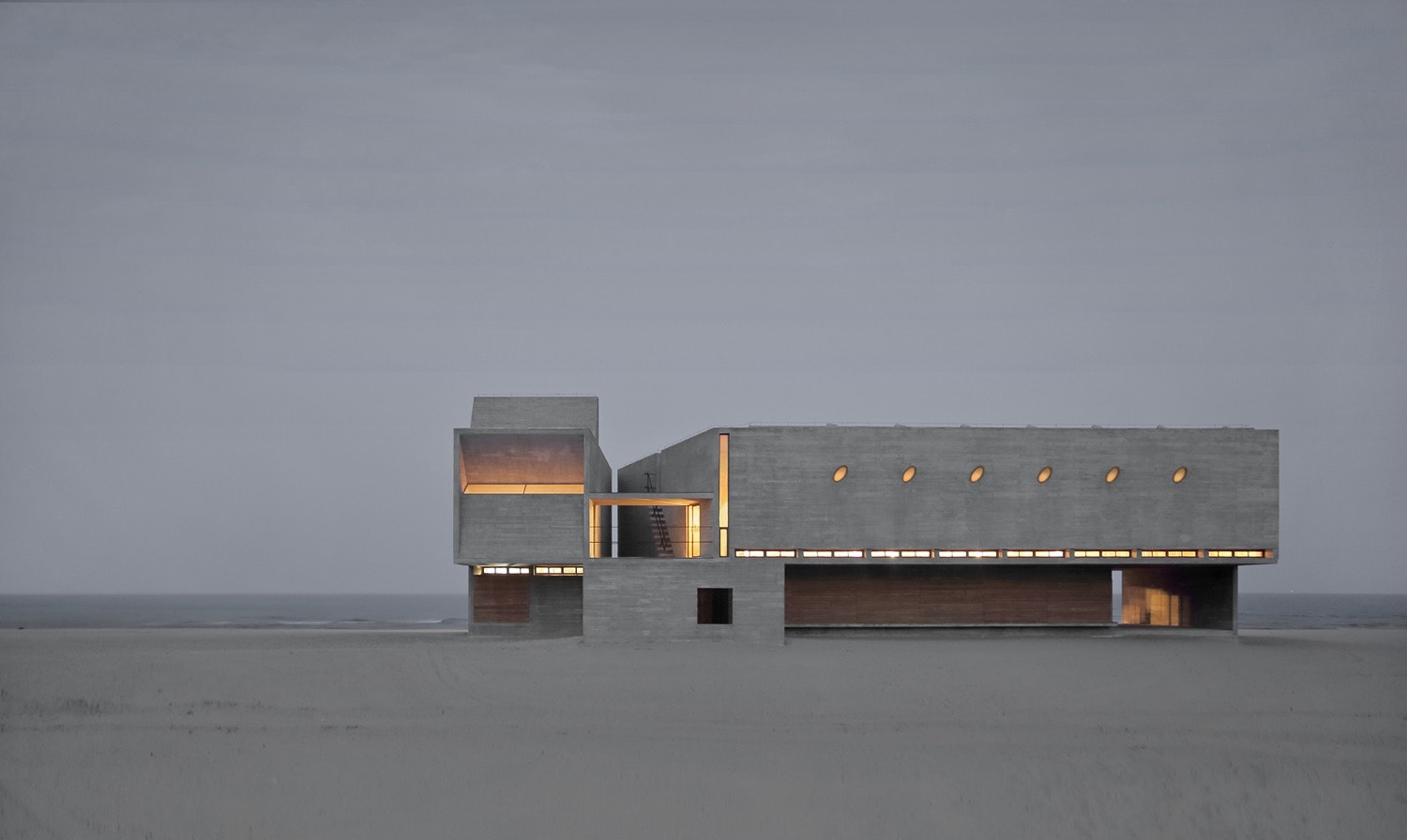
#PUBLIC ARCHITECTURE PROJECTS
Concentration at the Beach
Vector Architects from Beijing have designed a new library situated right on the beach on the north Chinese coast. The solid concrete block looks surreal in its natural environment. The site at Nandaihe is south of the established resort of Beidaihe, where in colonial times foreigners established their summer retreat, and which the political elite from Beijing still uses as their weekend getaway.
The distance between Beijing and Nandaihe is about three hours by car. The tourist resort at the beach is beginning to be developed as a reaction to the growing middle class’s demands for appropriate recreation facilities. While the natural conditions, which include golden sandy beaches, are wonderful, the need for entertainment requires new infrastructure. The new tourist development has to focus on both quality and uniqueness to attract visitors from the capital.
The library stands directly on the beachfront. The combination of the freestanding structure and the expanse of smooth sand looks as if a giant has dropped a toy in a sandpit. However, behind the sand strip there is a huge urban development under construction that will soon accommodate new tourism infrastructure with hotels, restaurants, a golf course and a new man made landscape. The library at the beach is an exposed symbol of contemplation and spiritual recreation in a society on its way to losing every frame of reference to frantic urbanisation.
The two-storey building opens up towards the ocean. The ground floor is entered from the back of the building where a porch guides the visitor into the reception, which is directly connected to a bar and lounge area. The main room that holds the library is a double height space with reading platforms on three levels. The front façade is horizontally organized in three layers: on the ground floor folding glass doors, frameless glass panels above and translucent glass blocks at the top. The back wall merges into the ceiling through a curve. This curved wall-roof is punctuated by circular holes, which create moving lines of dots across the space as the sun sets.
A diagonal wall separates the rectangular space above the entrance into two triangular spaces. One is accessible from the big reading room and is designated as a meditation space. The front façade in this room is folded inward and the central horizontal window strip allows only a selective view towards the ocean. At the back of the triangle a vertical glass strip lights the space. Its curved ceiling is a section of a circle, which creates a specific spatial experience. From the second triangle, which is open to the sky, a stair leads to the curved roof. From this open court a separate room is accessible that is reserved for “activities” and faces the ocean with a balcony.
In terms of materials, fair-faced concrete dominates the exterior and interior. The interior furnishing for the bookshelves, the window frames and the floors in the whole building are made from laminated bamboo slats. Further materials include the humble black painted metal hand-railings and the black cushions of the seats. Such a reduced range of materials allows the users to concentrate on the views towards the ocean and the stock of books in the library.
This limited range of rough materials combined with the spatial composition, the theatrical use of sunlight and the precisely planned views that open to the sea, make the building more than just a library for literature – it is a container of of the natural forces that define and reinforce the visitor’s spatial experience. The pure materials help to create a concentrated atmosphere, in which natural phenomena and users will leave their traces. Vector Architects’ library on the beach is an unusual, spatially rich place that refers to the best Brutalist buildings of the 1960s.





